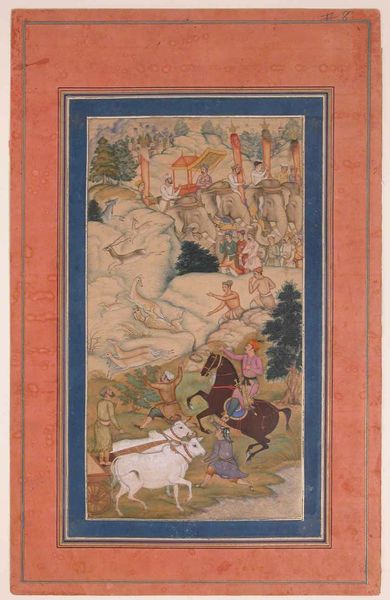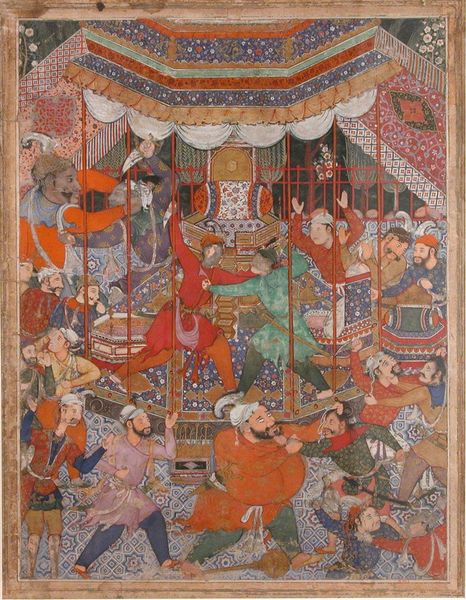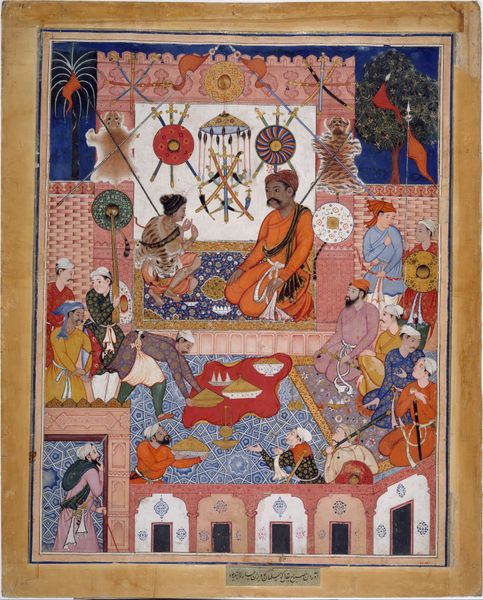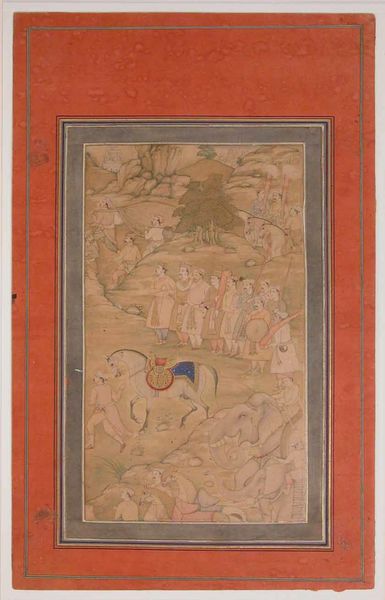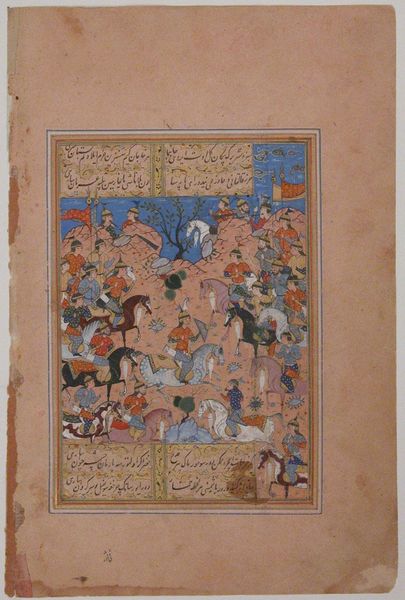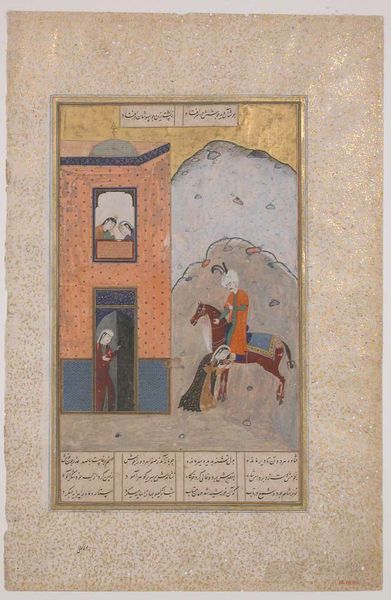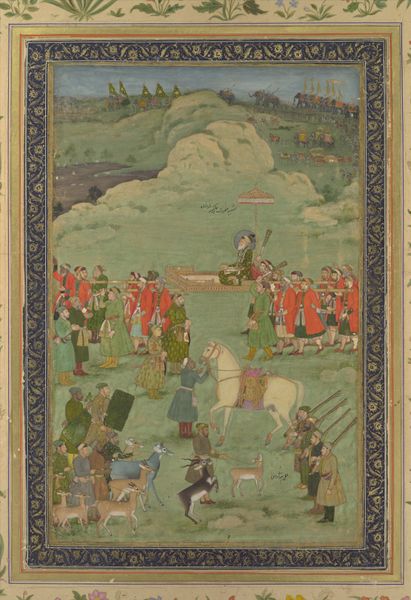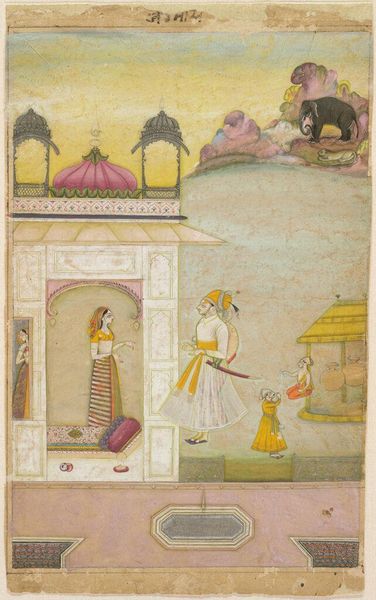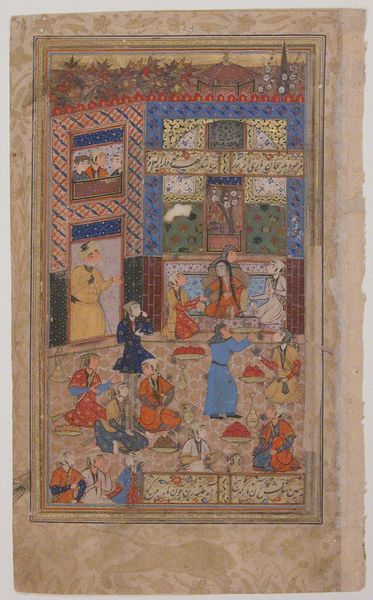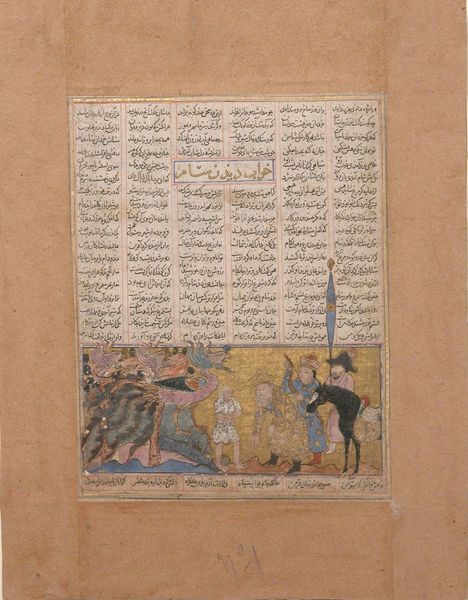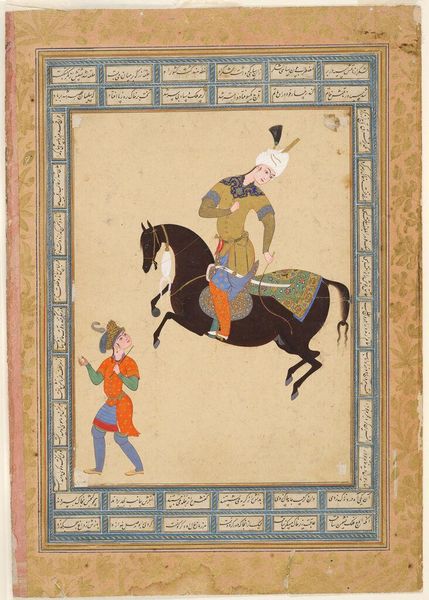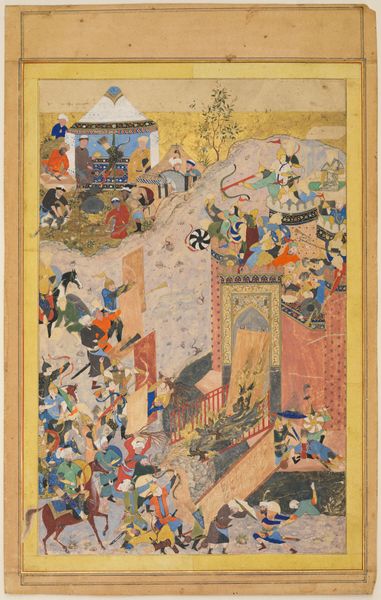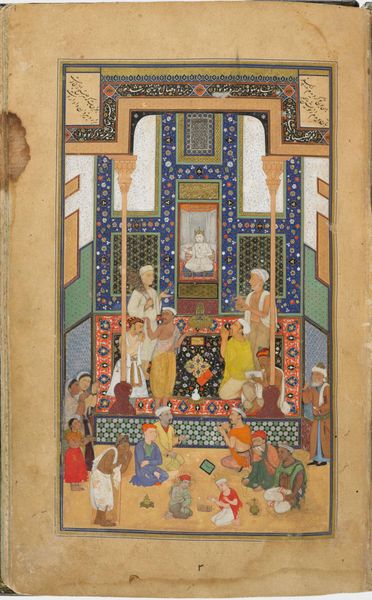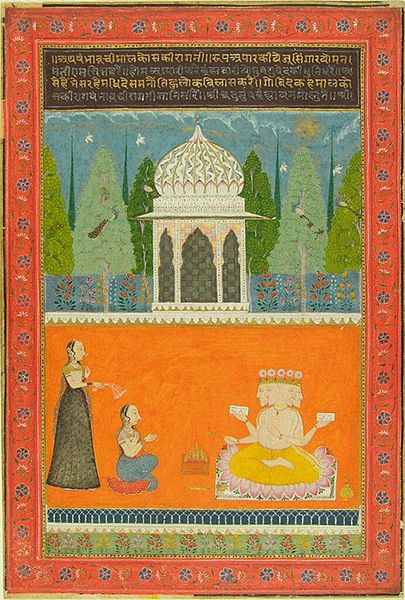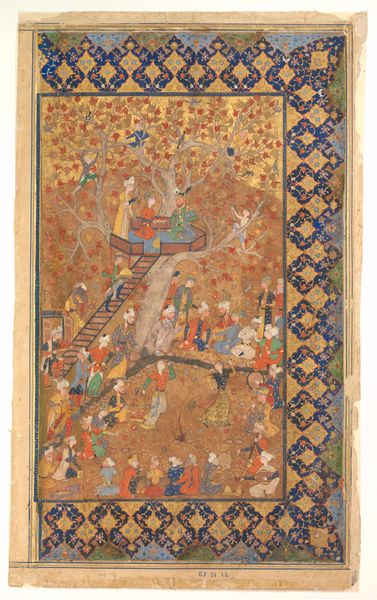
"The Emperor Humayun Returning from a Journey Greets his Son", Folio from a Manuscript of the Akbarnama. Folio from the Davis Album 1579 - 1629
0:00
0:00
painting, watercolor
#
portrait
#
water colours
#
narrative-art
#
painting
#
landscape
#
ukiyo-e
#
watercolor
#
horse
#
men
#
islamic-art
#
watercolour illustration
#
history-painting
#
miniature
Dimensions: Page: H. 13 1/8 in. (33.3 cm) W. 8 1/4 in. ( 21 cm) Painting: H. 9 5/8 in. (24.4 cm) W. 6 in. (15.2 cm) Mat: H. 19 1/4 in. (48.9 cm) W. 14 1/4 in. (36.2 cm)
Copyright: Public Domain
Curator: The scene before us, "The Emperor Humayun Returning from a Journey Greets his Son," a folio from a manuscript of the Akbarnama dating from 1579-1629. Editor: What immediately strikes me is the layering – the visual density of the composition. It feels packed, teeming with life, and rendered in, what is it, watercolor? Curator: Yes, primarily watercolors. Looking at the socio-political context, this image is from the Akbarnama, a lavishly illustrated official chronicle commissioned by Akbar, Humayun's son. The painting’s not merely decorative; it serves to legitimize the Mughal dynasty. Editor: Right, because what's depicted isn’t just a familial greeting, but the very embodiment of succession and imperial power. I see this meticulously rendered procession and consider the materials used to create these illuminations – the precious pigments, the finely crafted paper, the sheer labor involved. It screams of opulence. Curator: Precisely. The painting is asserting authority and power. This return, this reunion of father and son, takes on significance when seen as a continuation of rule. Think about what this imagery does – portraying the ruler and family in a harmonized idealized setting. It reinforces cultural norms but also the gendered implications of the image. It focuses almost entirely on men. Editor: Indeed, who is allowed to perform labor and receive glory. But what about the elephants? Gold embellishments stand out against gray textures, speaking volumes about status and control over resources, a visual manifestation of imperial reach. It seems the animals were decorated with even more attention than most people depicted here. Curator: Good eye. Elephants were a status symbol in the Mughal empire. In understanding this history, we learn to recognize their presence here is not just visual ornamentation, but is symbolic. Even within a complex dynastic portraiture, clear visual hierarchies were constructed through placement, adornment, even relative sizes of the animal figures in relation to people. Editor: Seeing these visual clues has helped deepen my perspective. The layers of meaning within the medium itself underscores the historical context that frames it. Curator: For me too, this has been very helpful for highlighting those broader themes of power, gender and the stories told through representation.
Comments
No comments
Be the first to comment and join the conversation on the ultimate creative platform.
